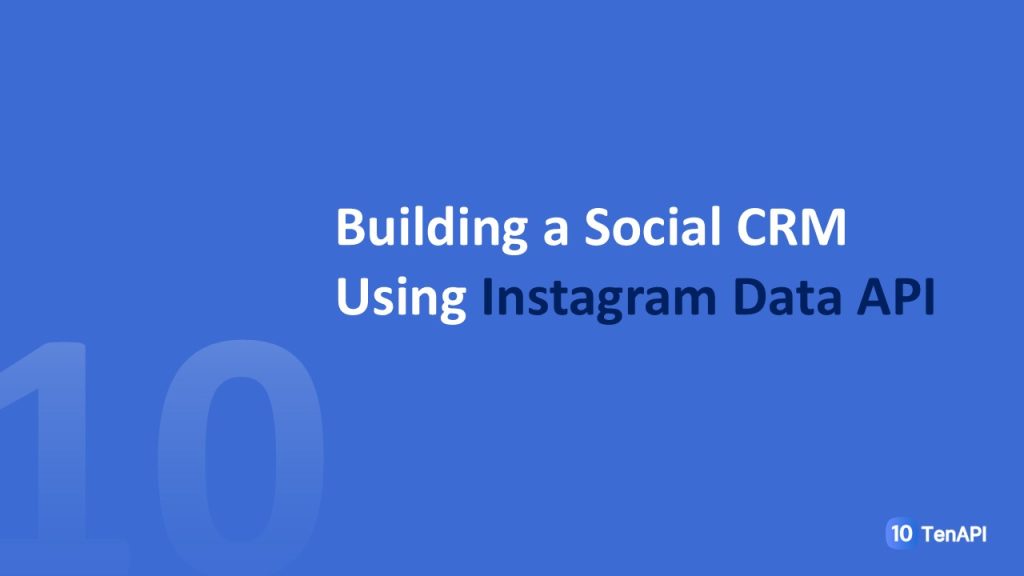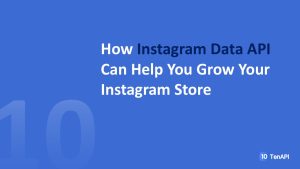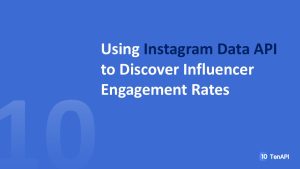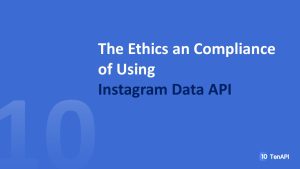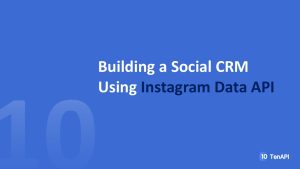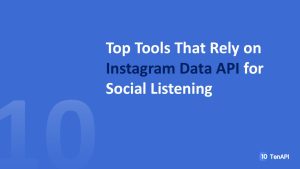In today’s digital-first world, brands are expected to connect with customers where they live — and let’s be honest, a lot of them live on Instagram. But here’s the catch: you can’t manage what you don’t measure. That’s where a Social CRM (Customer Relationship Management) system comes into play.
Imagine being able to track every like, comment, and mention, right inside your CRM. Better yet, imagine being able to respond to DMs, spot loyal followers, and identify potential customers — all in one place. That’s exactly what building a social CRM using Instagram Data API can help you do.
Let’s walk through how to make it happen.
What is Social CRM?
Social CRM is like your traditional CRM, but supercharged with social media insights. It helps you understand not just what your customers buy, but how they interact with your brand socially.
It’s about tracking:
-
Who’s talking about you
-
What they’re saying
-
How you’re responding
All of that in a centralized place.
Why Instagram Matters in CRM Today
Instagram isn’t just for pretty pictures anymore. With over 2 billion monthly users, it’s where brand loyalty is built — or broken.
More than 80% of users follow at least one business. Your brand’s Instagram can become a lead magnet, feedback channel, and customer service hub if you use it right.
Understanding Instagram Data API
What is Instagram Graph API?
The Instagram Graph API is the official way businesses can programmatically access Instagram data. It’s part of the Meta for Developers platform and is primarily designed for:
-
Business and Creator accounts
-
Data such as comments, mentions, followers, media insights, etc.
Differences Between Basic Display API and Graph API
| Feature | Basic Display API | Graph API |
|---|---|---|
| Account Type | Personal | Business/Creator |
| Data Access | Basic profile + media | Full insights, engagement data |
| Messaging Support | ❌ | ✅ |
| CRM Integration Ready | ❌ | ✅ |
For a CRM, always go with the Graph API.
Accessing Instagram Data Legally and Securely
Instagram has tight rules. To stay compliant:
-
Use OAuth 2.0 for authentication
-
Only request data you actually need
-
Display privacy disclosures if collecting data
Bonus Tip: Avoid shady third-party scraping tools — they’ll get your app banned.
Benefits of Using Instagram Data in Your CRM
Enhanced Customer Engagement
Know who your most loyal commenters are? Or who frequently shares your stories? Tracking that helps you reward loyalty and boost engagement.
Personalization Through Social Insights
Imagine your CRM reminding you that a customer recently commented, “Love this product!” on your latest post. Now you’ve got context to personalize your next interaction.
Monitoring Brand Sentiment and Feedback
By analyzing comment sentiment and DMs, you can quickly catch:
-
Angry customers
-
Product issues
-
Opportunities to delight
It’s like having a radar for brand health.
Core Features of a Social CRM Powered by Instagram
Contact and Interaction History
Build full profiles of users:
-
Name, bio, profile pic
-
Engagement history
-
Past conversations
Content Tracking (Likes, Comments, Mentions)
Track which content gets:
-
The most shares
-
The highest engagement
-
The best feedback
Perfect for improving your content strategy.
DM (Direct Message) Integration
Respond to customers directly from your CRM. With the Messenger API for Instagram, you can:
-
Assign DMs to team members
-
Respond quickly
-
Track message history
Step-by-Step Guide to Building a Social CRM Using Instagram API
Step 1: Set Up Your Instagram Business Account
You’ll need:
-
A Facebook Page
-
An Instagram Business or Creator account
-
Both linked together
Step 2: Get Facebook App and Access Token
-
Create a Facebook App via Meta for Developers
-
Enable Instagram Graph API
-
Generate a User Access Token with required scopes like
instagram_basic,pages_read_engagement,instagram_manage_messages
Step 3: Authenticate and Connect the API
Use OAuth 2.0 to authenticate users and obtain access tokens.
Example endpoint:
https://graph.instagram.com/me?fields=id,username&access_token=YOUR_TOKEN
Step 4: Extract Key Data Points
Use the following endpoints:
-
Followers:
/me/followers -
Mentions:
/me/mentioned_media -
Comments:
/media/{media-id}/comments -
Messages: via Messenger API for IG
Step 5: Store and Structure Data in CRM
Set up your CRM with tables like:
-
Contacts
-
Interactions
-
Engagement Logs
-
Message History
Use a relational database like PostgreSQL or a CRM like HubSpot.
Step 6: Enable Engagement and Response Features
Integrate:
-
Auto-responders for common DMs
-
Tagging system for followers (e.g., “hot lead”, “VIP”)
-
Analytics dashboards for insights
Tools and Technologies Required
API Clients (Postman, Insomnia)
These help you test your API endpoints before coding them into your CRM.
Backend Stack (Node.js, Python, PHP)
Choose your favorite stack. Python with Flask or FastAPI is fast and beginner-friendly.
CRM Platforms (HubSpot, Salesforce, Custom Solutions)
Use a prebuilt CRM or build your own if you want more control.
Challenges and Considerations
Privacy and GDPR Compliance
Always:
-
Get user consent
-
Allow data deletion
-
Be transparent
Rate Limits and API Restrictions
You only get a certain number of calls per hour. Plan your data sync accordingly.
Data Cleaning and Filtering
Remove spammy comments, bots, or irrelevant data to maintain CRM quality.
Tips to Maximize Results from Your Social CRM
Use AI for Sentiment Analysis
Implement AI-powered tools to analyze the tone of comments and messages. It helps to quickly prioritize which conversations need urgent attention.
Automate Follow-Ups Based on Behavior
Set rules such as automatically sending a thank-you message to users who mention your brand or comment positively.
Segment Followers for Targeted Campaigns
Tag followers based on behavior, location, or engagement level to send customized offers or content.
Conclusion
Building a Social CRM using Instagram Data API is a game-changer for brands looking to deepen their customer relationships. It allows you to harness rich social data, turning casual followers into loyal customers by personalizing every interaction. While setting up might seem technical, breaking it down into manageable steps — from account setup to API integration — makes it accessible to marketers and developers alike. Just remember to stay ethical, respect privacy, and use the data smartly to nurture authentic relationships.
The Instagram Data API isn’t just a tool — it’s your gateway to smarter, more responsive social customer management.
FAQs
Can I use Instagram API for personal accounts?
No. The Instagram Graph API is designed for Business and Creator accounts only. Personal accounts cannot access detailed API data.
Is it free to access Instagram data API?
Yes, using the Instagram Graph API is free, but there are usage limits and you must comply with Instagram’s policies.
What programming languages are best for building a CRM?
Python, Node.js, and PHP are popular backend choices. Python is great for AI integration, while Node.js is strong in real-time communication.
How often should I update data in my CRM?
It depends on your needs — real-time updates are ideal but syncing every 30 minutes to an hour is a practical balance.
Can I connect Instagram DMs directly to my CRM?
Yes, using the Messenger API for Instagram, you can integrate DMs into your CRM for centralized communication management.

